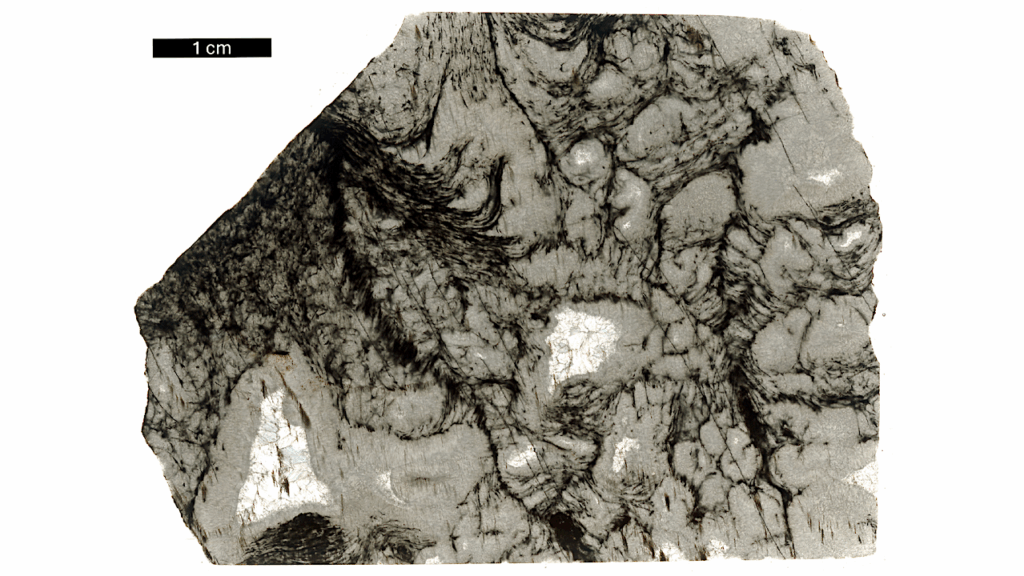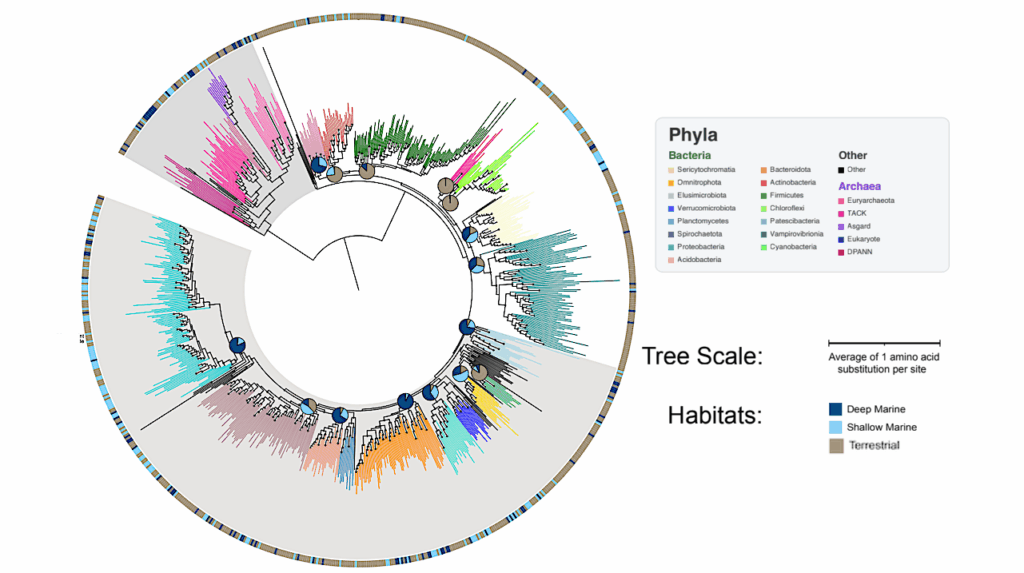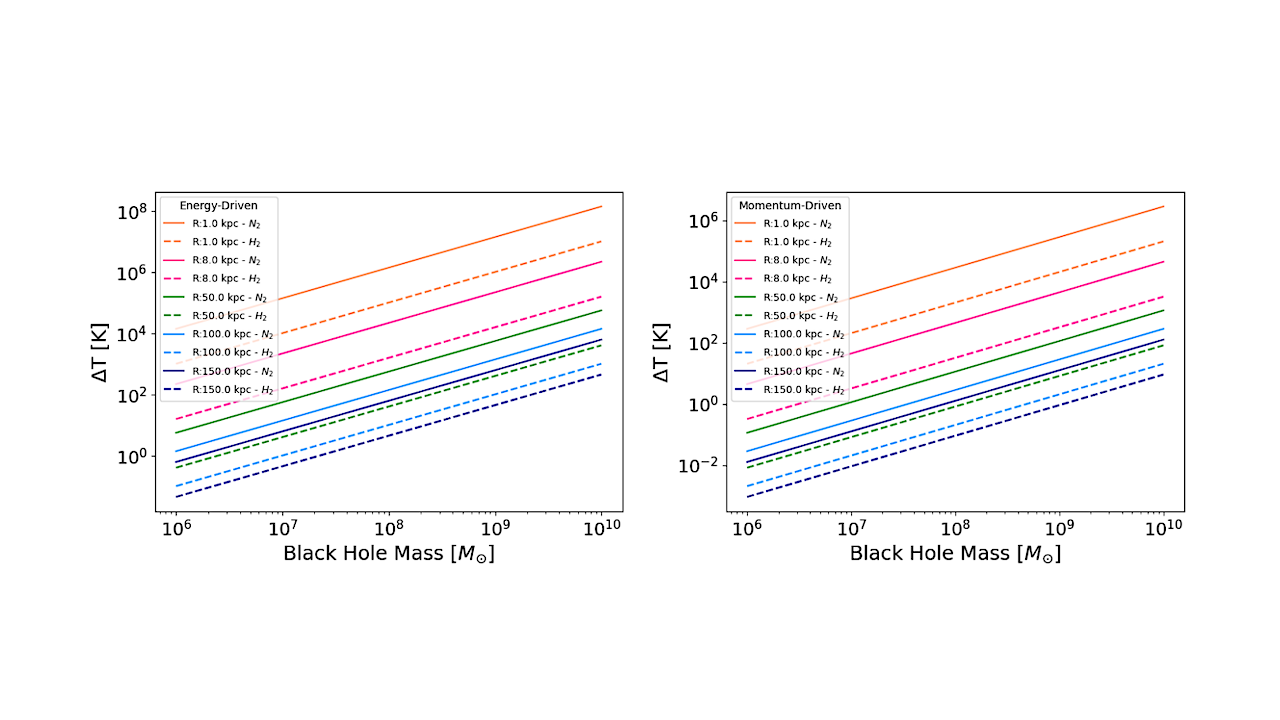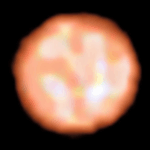Now Reading: Geochemical Mobility of Elements in Antarctic Environments Affected by CO2-Rich Hydrothermal Fluids: Astrobiological Implications
-
01
Geochemical Mobility of Elements in Antarctic Environments Affected by CO2-Rich Hydrothermal Fluids: Astrobiological Implications
Geochemical Mobility of Elements in Antarctic Environments Affected by CO2-Rich Hydrothermal Fluids: Astrobiological Implications


A drill-core section of the CCBH2 borehole showing a yellowish-red color resulting from the hydrothermal alteration process, with small carbonate mineralizations. In the bottom left, a fragment of the CCBH2 68–80 sample prepared for scanning electron microscope (SEM)—Raman analysis. — Astrobiology via PubMed
Hydrothermal systems are widespread in our solar system. Identification of alteration mineral assemblages on Mars and potentially in ocean worlds such as Enceladus suggests the existence of extensive hydrothermal fluid-igneous rock interactions of astrobiological interest in different planetary bodies.
Here, we studied the terrestrial analog Cerro Caliente, a band of geothermal alterations located in the glaciovolcanic environment of Deception Island (Antarctica), with the aim of determining the mobility of major chemical elements (e.g., alkalis, phosphorus) and its implications in the habitability potential of such environments.
We verified that the rock texture, particularly rich in volcanic glass, plays a major role in geochemical mobility, with permafrost delimiting the impact of hydrothermal activity by reducing the permeability of the lapilli tuff deposit.
We studied the mineralogy and geochemistry of the alteration band by comparing borehole samples in different locations that represent different thermal regimes along the hydrothermal alteration band. The alteration products are characteristic of palagonitization processes, which favor the release of elements useful for life, such as phosphorus, although the basic alkalinity of the medium caused its precipitation in the form of tricalcium phosphate.
In addition, lipid biomarker analyses were performed to assess the existence of possible potential ecological niches associated with these environments. On Mars, the circulation of low-temperature CO2-rich hydrothermal fluids through glass-bearing volcanic rocks results in a loss of silica content and a secondary mineral assemblage composed of palagonite, phyllosilicates, and zeolites, which establishes Cerro Caliente as a valid Mars analog for understanding such environments.
In addition, our results support the hypothesis of a hydrothermal origin of phosphorous for the formation of Enceladus’ phosphates recently detected in the plumes. We also determined that a fraction of the calcium in Cerro Caliente was sequestered as carbonates of biogenic origin, which produced a distinctive Raman signal that, together with the lipid content, would make it a relevant potential biosignature if similar findings were made in the search for life in such low-temperature hydrothermal environments.
Astrobiology, Analog, Antarctica,
Stay Informed With the Latest & Most Important News
-
 012024 in Review: Highlights from NASA in Silicon Valley
012024 in Review: Highlights from NASA in Silicon Valley -
 02Panasonic Leica Summilux DG 15mm f/1.7 ASPH review
02Panasonic Leica Summilux DG 15mm f/1.7 ASPH review -
 03How New NASA, India Earth Satellite NISAR Will See Earth
03How New NASA, India Earth Satellite NISAR Will See Earth -
 04And Thus Begins A New Year For Life On Earth
04And Thus Begins A New Year For Life On Earth -
 05Astronomy Activation Ambassadors: A New Era
05Astronomy Activation Ambassadors: A New Era -
06SpaceX launch surge helps set new global launch record in 2024
-
 07Space Force plans new ‘Futures Command’ amid pressure to speed up modernization
07Space Force plans new ‘Futures Command’ amid pressure to speed up modernization




















